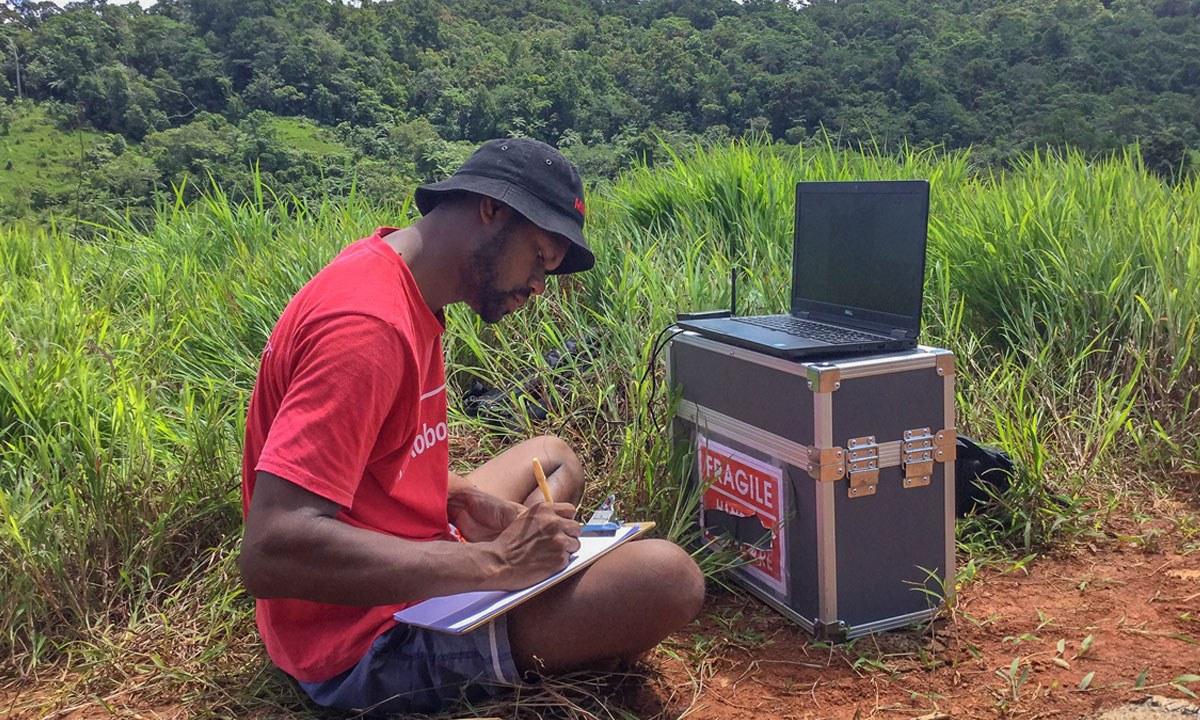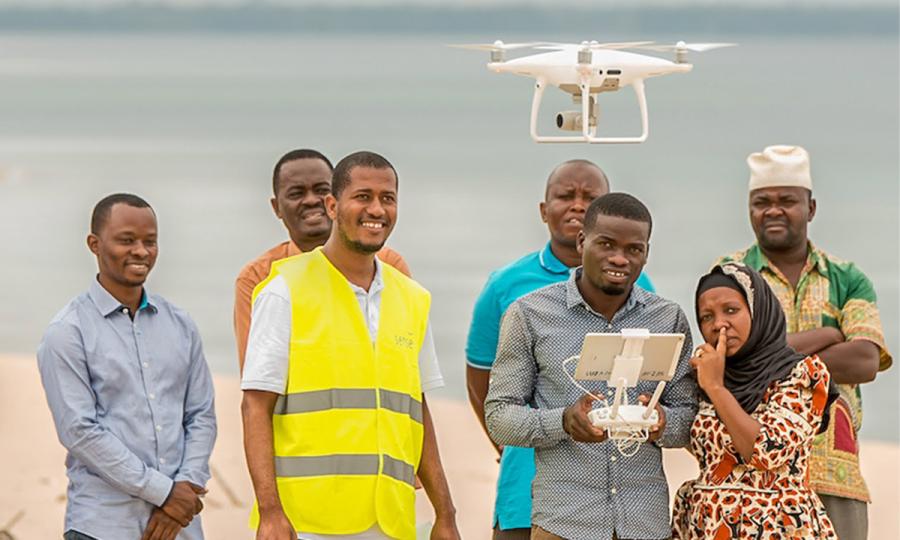Why Drones, Data & AI
Can you imagine a technology that allows just about anyone to create their own data, information and evidence and involve communities to build data trust and STEM capacity, all the while leapfrogging innovation?
- Why
- Why Drones, Data & AI
Why Drones, Data and AI?
We have set ourselves a two-fold mission at WeRobotics: co-creating a practical example on how to responsibly and sustainably localize Tech4Good, while developing a replicable model along the way (read more on our mission here).
To co-create a solution for the first part of our mission, we needed outputs for both the localization as well as the technology focus areas. We decided on:
- A network of independently organized expertise hubs that are coordinated by local experts in Africa, Asia and Latin America. We decided to create a specific, independent brand for these hubs and the Network: Flying Labs, and the Flying Labs Network. Why? Find our reasons here.
- Drones, data and AI for data-analysis as our technology focus, as we have a strong passion for these technologies from a power-shifting perspective. Why? Find our reasons here:

A technology that allows just about anyone to create their own geospatial (EO)and aerial data and generate information, insights and evidence
Drones are primarily a geospatial/EO data acquisition tool that allows a user to take a perspective from an aerial point of view, which can then add a wealth of information to inform a wide variety of decisions. In addition to being an affordable means of data acquisition, data users have the full decision power over the moment of time of data acquisition, as well as the resolution and quality of data they need.
I think drone technology is responding to our needs even more than to those of people in other parts of the world. In more developed parts of the world, drones might be used for maintenance and making films. In Africa, we use drones for data collection because parts of our continent do not have accurate, ready-to-use geospatial / EO data. Lots of places on the continent are not covered by satellite and also connectivity doesn’t cover some parts of the continent to access online geospatial data. We need data for decision making that is readily available and can be produced without the need of internet connectivity.
— Tiamayou Radji, Director, Senegal Flying Labs
Drones as a tool to work with local communities
One of the key advantages of drones over satellite imagery or geospatial information acquired by airplanes is that, by their nature, they allow communities to be part of the data production process. Involving communities in drone data collection allows community members to become more involved in the process, which supports higher trust in data and informs decision making, ultimately leading to transparent ownership of decisions made.
Drones allow data stakeholders to be an integral part of the whole data journey, from deciding what data to acquire, to data processing, all the way to analysis of the final data products and creating actionable insights.
— Klaudyna Wrochna, Drone & Data Insights Lead, WeRobotics
Due to their nature, drones are more accessible to a wider audience
Compared to other technologies such as satellite or remote sensing with manned airplanes, drones are much more accessible to people and communities, including youth.
Discover the wide range of sectors that drones & data can support here.
Every single time we go somewhere, the first people who come to ask questions are kids. In some projects we were in really remote parts of the jungle. Some of these communities are very remote and are in places where it would take them hours or days to get to the next big town by boat. Wherever we arrive, the children are the most curious to know what we are doing. This is why we developed the drone school program in 2018—to reach these youth who don’t get such opportunities. And now, we are working in the Wings for the Future program, to continue bringing technology closer to youth and children and motivating them to be part of the STEM world.
— Kimberly Rojas, Program Coordinator and Drone Pilot, Peru Flying Labs
An emerging technology that sets new standards for regulations and policies
Drones are a highly regulated technology. With their lived experience, local experts and the local drone ecosystem they contribute to are best placed to help inform and improve drone regulations and policies. This creates a bottom-up approach to regulation and policy making in the drone space by tapping into local expertise, and sets new precedents for other technologies and their locally-adapted regulations and policies.
A technology that enables leapfrog innovation
Drones enabling leapfrog innovation across various sectors and industries. Their versatility and accessibility have catalyzed advancements in sectors such as agriculture, logistics, and monitoring, even more so in Africa, Latin America and Asia/Pacific. For example, in agriculture, drones offer solutions for precision farming and applying pesticides efficiently. In logistics, they offer new ways deliveries, particularly in remote or challenging terrains. By circumventing conventional infrastructure requirements and offering unprecedented flexibility, drones have become a catalyst for innovation.
